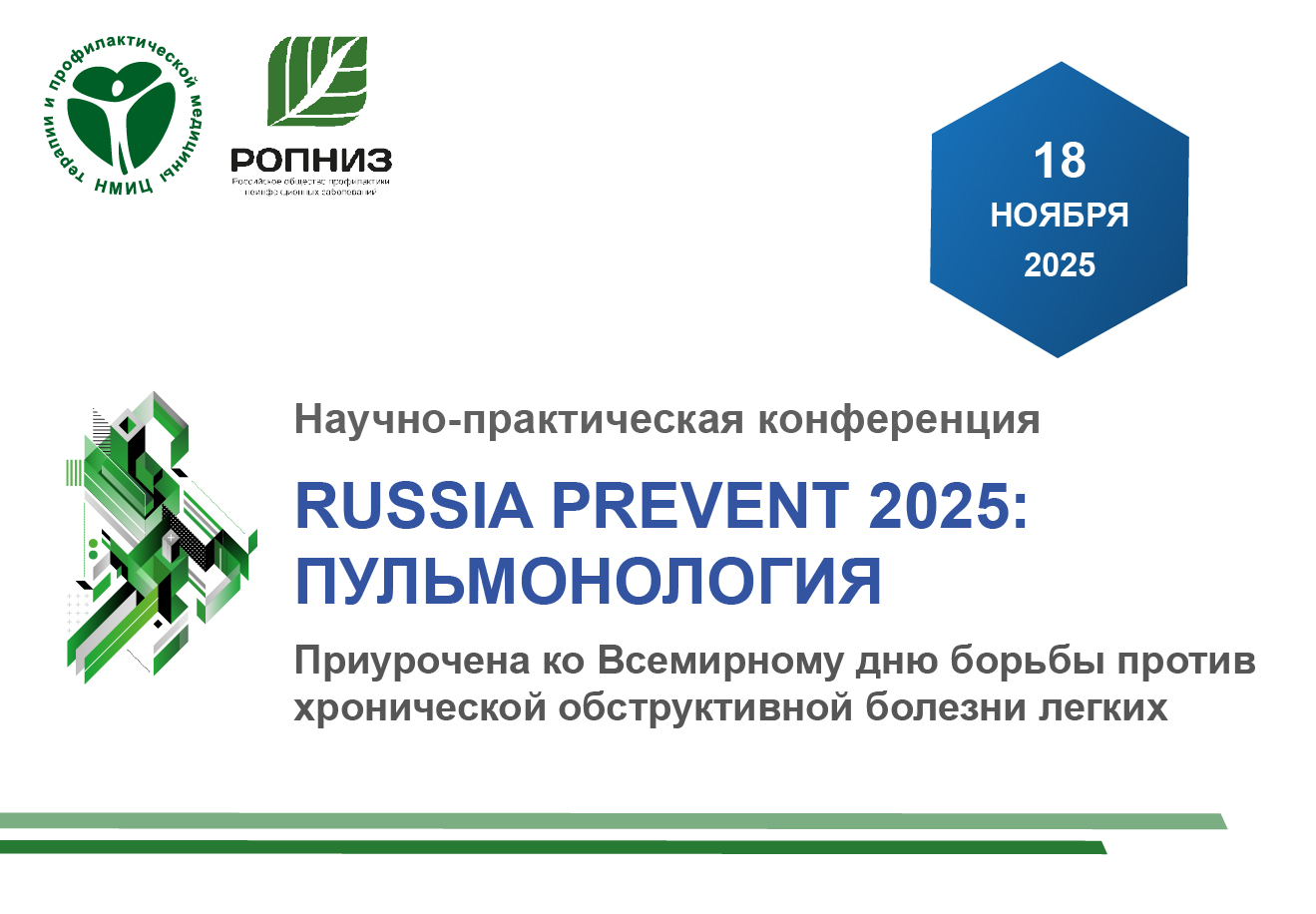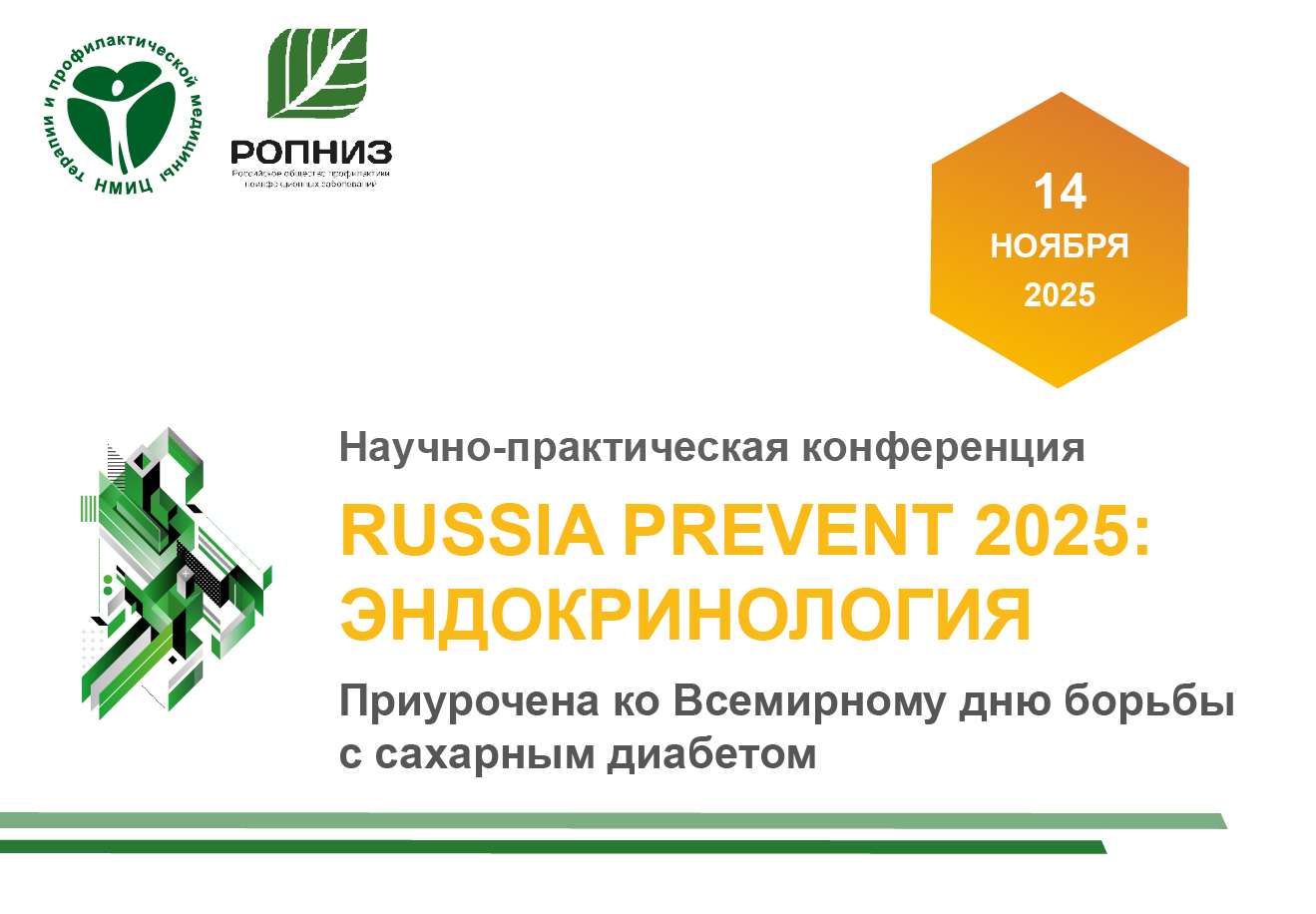Lipid Clinic is an Efficacious Model of Preventive Medicine
https://doi.org/10.20996/1819-6446-2021-01-02
Abstract
Aim. To characterize patients accessing lipid clinic and assess the efficiency of treatment in a specialized medical center.
Material and methods. A retrospective analysis of the surviving medical records of outpatients who visited the lipid clinic of the National Research Center for Therapy and Preventive Medicine (Moscow, Russia) in 2011-2019 (n=675) was carried out. Cardiovascular risk (CVR) and target lipoproteins levels were evaluated in accordance with actual guidelines for the diagnostics and correction of dyslipidemias.
Results. The mediana of lipid clinic patients age was 57 [46;65] years. Female persons attend lipid clinic more often (61.5%). 48.5% of patients had low density lipoprotein cholesterol (LDL-c) >4.9 mmol/L, 7.7% had triglycerides level >5.5 mmol/L. Most of the patients were diagnosed with type IIa hyperlipidemia (44,1%) or type IIb (28,0%). Inherited impaired lipid metabolism was diagnosed in 27.7% individuals. 12.7% of the patients had familial hypercholesterolemia, 57.4% – had secondary causes of impaired lipid metabolism. More than half of the patients (52.4%) had low or moderate CVR, 28.1% had a very high CVR. High or very high CVR individuals revisited the lipid clinic more often than people with lower risk (68.2% vs. 35.4%). Revisiting patients (25.4%) reached LDL-c targets more often (33.3% of very high CVR patients; 45.5% of moderate-risk people) than in ordinary outpatient practice. High-intensity statin therapy was recommended for 32% of patients, and combined lipid-lowering therapy – for 14.8%. Among very high CVR individuals, combined lipid-lowering therapy was prescribed for 38.5%. Given the lipid-lowering therapy prescribed in the lipid clinic, LDL-с<1.8 mmol/L and<1.5 mmol/L will be achieved at 40.7% and 32.9% of patients with very high СVR.
Conclusion. Lipid clinic is an important part of the medical care system for long-term follow-up of patients with impaired lipid metabolism, and it is more efficient in achieving target values of lipids and correcting risk factors in comparison with the primary medical service.
About the Authors
A. V. BlokhinaRussian Federation
Anastasia V. Blokhina
Moscow
eLibrary SPIN: 1103-6168
A. I. Ershova
Russian Federation
Alexandra I. Ershova
Moscow
eLibrary SPIN: 5292-5612
A. N. Meshkov
Russian Federation
Alexey N. Meshkov
Moscow
eLibrary SPIN: 6340-5187
A. S. Limonova
Russian Federation
Alena S. Limonova
Moscow
eLibrary SPIN: 1762-2462
V. I. Mikhailina
Russian Federation
Victoria I. Mihailina
Moscow
eLibrary SPIN: 8954-8462
O. M. Drapkina
Russian Federation
Oxana M. Drapkina
Moscow
eLibrary SPIN: 4456-1297
References
1. Hegele R.A., Borén J., Ginsberg H.N. et al. Rare dyslipidaemias, from phenotype to genotype to management: a European Atherosclerosis Society task force consensus statement. Lancet Diabetes Endocrinol. 2020; 8(1):50-67. DOI:10.1016/S2213-8587(19)30264-5.
2. Ershova A.I., Al Rashi D.O., Ivanova A.A. et al. Secondary hyperlipidemias: etiology and pathogenesis. Russ J Cardiol. 2019;24 (5):74-81 (In Russ.) DOI:10.15829/1560-4071-2019-5-74-81.
3. Mach F., Baigent C., Catapano A.L., et al. 2019 ESC/EAS Guidelines for the management of dyslipidaemias: lipid modification to reduce cardiovascular risk: The Task Force for the management of dyslipidaemias of the European Society of Cardiology (ESC) and European Atherosclerosis Society (EAS). Eur Heart J. 2020;41(1):111-88. DOI:10.1093/eurheartj/ehz455.
4. Negoi I., Paun S., Sartelli M., et al. Hypertriglyceridemia-induced acute pancreatitis: A systematic review of the literature. J Acute Dis. 2017;6(1):1. DOI:10.12980/jad.6.2017JADWEB-2016-0058.
5. Virani S.S., Alonso A., Benjamin E.J., et al. Heart disease and stroke statistics-2020 update: a report from the American Heart Association. Circulation. 2020;141(9):139-596. DOI:10.1161/CIR.0000000000000757.
6. Catapano A.L., Graham I., De Backer G., et al. 2016 ESC/EAS guidelines for the management of dyslipidaemias. Eur Heart J. 2020;37(39):2999-3058. DOI:10.1093/eurheartj/ehw272.
7. Zagrebelnyi A.V., Martsevich S.Y., Lukyanov M.M., et al. Quality of lipid-lowering therapy in outpatient practice: RECVAS Register data. Preventive Medicine. 2016;19(1):9-14 (In Russ.) DOI:10.17116/profmed20161919-14.
8. Akhmedzhanov N.M., Nebieridze D.V., Safaryan A.S., et al. Analysis of hypercholesterolemia prevalence in the outpatient practice (according to the ARGO study): Part I. Rational Pharmacotherapy in Cardiology. 2015;11(3):253-60 (In Russ.) DOI:10.20996/1819-6446-2015-11-3-253-260.
9. De Backer G., Jankowski P., Kotseva K., et al. Management of dyslipidaemia in patients with coronary heart disease: Results from the ESC-EORP EUROASPIRE V survey in 27 countries. Atherosclerosis. 2019;285:135-46. DOI:10.1016/j.atherosclerosis.2019.03.014.
10. Beaumont J.L., Carlson L.A., Cooper G.R., et al. Memorandum W. H. O. Classification of hyperlipidemias and hyperlipoproteinemias. Circulation. 1972;45(1):501-8. DOI:10.1161/01.CIR.45.2.501.
11. Ezhov M.V., Sergienko I.V., Aronov D.M., et al. Diagnostics and correction of lipid metabolism disorders in order to prevent and treat atherosclerosis. Russian recommendations VI revision. Atherosclerosis and Dyslipidemia. 2017;3:1-12 (In Russ.)
12. Lawford B.R., Barnes M., Connor J.P., et al. Alcohol use disorders identification test (AUDIT) scores are elevated in antipsychotic-induced hyperprolactinaemia. J Psychopharmacol. 2012;26(2):324- 9. DOI:10.1177/0269881110393051.
13. Sokolov A.A., Alexandrova O.Yu., Kashtalap V.V., et al. Guidelines on the organization of medical care to patients with hereditary atherogenic lipid disorders in Russian regions. Atherosclerosis and Dyslipidemia. 2016;4(25):14-20 (In Russ.)
14. Kozhokar K.G., Urvantseva I.A. Improvement of medical care for the patients with lipid disorders (case of lipid center of the “district cardiological dispensary center of the diagnostics and cardiovascular surgery”, Surgut city). Russ J Cardiol. 2017;5(145):97-103 (In Russ.) DOI:10.15829/1560-4071-2017-5-97-103.
15. Ershova A.I., Meshkov A.N., Bazhan S.S., et al. The prevalence of familial hypercholesterolemia in the West Siberian region of the Russian Federation: A substudy of the ESSE-RF. PLoS One. 2017;12(7):e0181148. DOI:10.1371/journal.pone.0181148.
16. Akioyamen L.E., Genest J., Shan S.D., et al. Estimating the prevalence of heterozygous familial hypercholesterolaemia: a systematic review and meta-analysis. BMJ Open. 2017;7(9):e016461. DOI:10.1136/bmjopen-2017-016461.
17. Yershova A.I., Shcherbakova N.V., Suvorova A.A., et al. Differential diagnosis of hereditary syndrome of hypocholesterolemia by using exomic sequencing. Rational Pharmacotherapy in Cardiology. 2014;10(5):509-12 (In Russ.) DOI:10.20996/1819-6446-2014-10-5-509-512.
18. Pechlivanis S., Mahabadi A.A., Hoffmann P., et al. Association between lipoprotein (a) (Lp (a)) levels and Lp (a) genetic variants with coronary artery calcification. BMC Med Genet. 2020;21(1):1-10. DOI:10.1186/s12881-020-01003-3.
19. Yezhov M.V., Bliznyuk S.A., Tmoyan N.A., et al. Register of patients with familial hypercholesterolemia and patients of very high cardiovascular risk with lipid-lowering therapy underperformance (RENESSANS). Russ J Cardiol. 2019;24(5):7-13 (In Russ.) DOI:10.15829/1560-4071-2019-5-7-13.
20. Alonso R., Andres E., Mata N., et al. Lipoprotein (a) levels in familial hypercholesterolemia: an important predictor of cardiovascular disease independent of the type of LDL receptor mutation. J Am Coll Cardiol. 2014;63(19):1982-9. DOI:10.1016/j.jacc.2014.01.063.
21. Ghayour-Mobarhan M., Kazemi-Bajestani S.M.R., et al. Lipid clinics are urgently required in the Iranian public health system. Int J Prev Med. 2010;1(3):172.
22. Pirro M., Del Giorno R., Lupattelli G., et al. Cardiovascular risk factors and recommended lipid goals attainment among patients referred in a tertiary care lipid clinic. Eur J Intern Med. 2011;22(4):412- 7. DOI:10.1016/j.ejim.2011.04.007.
23. Wierzbicki A.S., Viljoen A., Viljoen S., et al. Review of referral criteria to lipid clinics and outcomes of treatment in four UK centres. Int J Clin Pract. 2018;72(9):e13242. DOI:10.1111/ijcp.13242.
24. Barkas F., Liberopoulos E.N., Kostapanos M.S., et al. Lipid target achievement among patients with very high and high cardiovascular risk in a lipid clinic. Angiology. 2015;66(4):346-53. DOI:10.1177/0003319714535073.
25. Degoma E.M., Ahmad Z.S., O’Brien E.C., et al. Treatment gaps in adults with heterozygous familial hypercholesterolemia in the United States: data from the CASCADE-FH registry. Circ-Cardiovasc Gene. 2016;9(3):240-9. DOI:10.1161/CIRCGENETICS.116.001381.
26. Koren M.J., Hunninghake D.B., and Alliance Investigators. Clinical outcomes in managed-care patients with coronary heart disease treated aggressively in lipid-lowering disease management clinics: the alliance study. J Am Coll Cardiol. 2004;44(9):1772-9. DOI:10.1016/j.jacc.2004.07.053.
27. Danchin N., Almahmeed W., Al-Rasadi K., et al. Achievement of low-density lipoprotein cholesterol goals in 18 countries outside Western Europe: The International ChoLesterol management Practice Study (ICLPS). Eur J Prev Cardiol. 2018;25(10):1087-94. DOI:10.1177/2047487318777079.
28. Gavish D., Leibovit E., Elly I., et al. Follow-up in a lipid clinic improves the management of risk factors in cardiovascular disease patients. Isr Med Assoc J. 2002;4(9):694-7.
29. Martin S.C., Viljoen A. The value of a specialist lipid clinic. Int J Clin Pract. 2008;62(6):961-6. DOI:10.1111/j.1742-1241.2007.01667.x.
30. Kukharchuk V.V., Ezhov M.V., Sergienko I.V., et al. Diagnostics and correction of lipid metabolism disorders in order to prevent and treat of atherosclerosis. Russian recommendations VII revision. Atherosclerosis and dyslipidemias. 2020;1(38):7-42 (In Russ.) DOI:10.34687/2219-8202.JAD.2020.01.0002.
31. Ballantyne C.M., Houri J., Notarbartolo A., et al. Effect of ezetimibe coadministered with atorvastatin in 628 patients with primary hypercholesterolemia: a prospective, randomized, double-blind trial. Circulation. 2003;107(19):2409-15. DOI:10.1161/01.CIR.0000068312.21969.C8.
32. Ridker P.M., Danielson E., Fonseca F.A. et al. Rosuvastatin to prevent vascular events in men and women with elevated C-reactive protein. N Engl J Med. 2008;359(21):2195-207. DOI:10.1056/NEJMoa0807646.
33. Sever P.S., Dahlof B., Poulter N.R., et al. Prevention of coronary and stroke events with atorvastatin in hypertensive patients who have average or lower-than-average cholesterol concentrations, in the Anglo-Scandinavian Cardiac Outcomes Trial-Lipid Lowering Arm (ASCOT-LLA): a multicentre randomised controlled trial. Lancet.2003;361:1149-58. DOI:10.1016/S0140-6736(03)12948-0.
34. Kalogirou M., Tsimihodimos V., Gazi I., et al. Effect of ezetimibe monotherapy on the concentration of lipoprotein subfractions in patients with primary dyslipidaemia. Curr Med Res Opin. 2007;23(5):1169-76. DOI:10.1185/030079907x188062.
Review
For citations:
Blokhina A.V., Ershova A.I., Meshkov A.N., Limonova A.S., Mikhailina V.I., Drapkina O.M. Lipid Clinic is an Efficacious Model of Preventive Medicine. Rational Pharmacotherapy in Cardiology. 2021;17(1):4-10. https://doi.org/10.20996/1819-6446-2021-01-02
















































